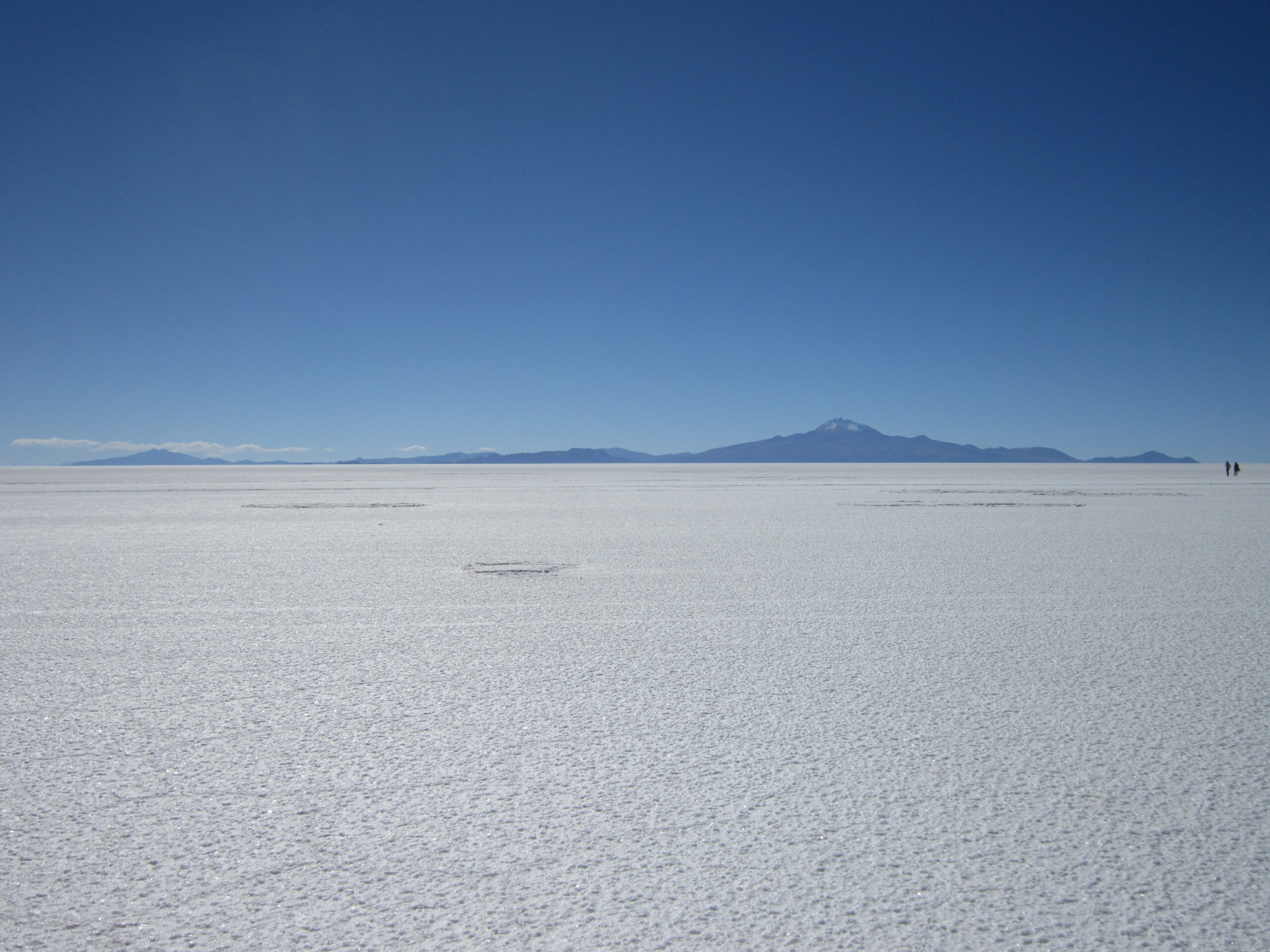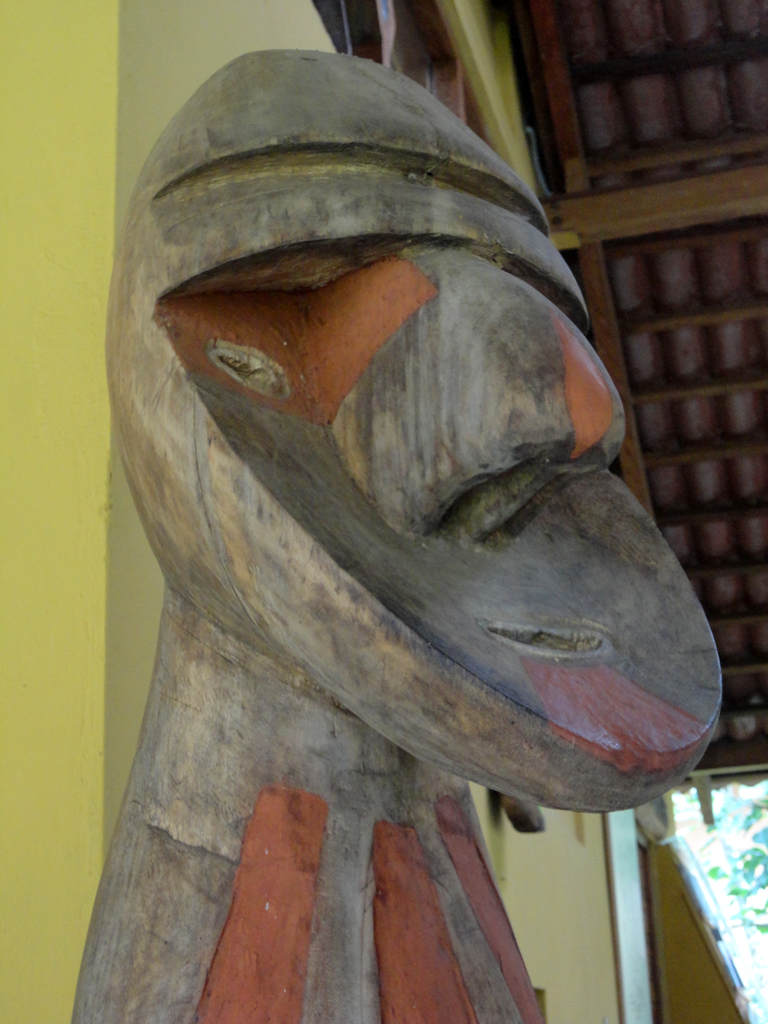
After almost 2 weeks in Chachapoyas I knew it was time to leave when the girls in the café next door to the hostal didn’t have to ask what I wanted for breakfast. Or the pub around the corner just gave me a Pilsen without asking. Chachapoyas is such an amazing little town the days just melted away and I was more than a little
surprised when 2 weeks had almost rolled around. I was also doing a lot of writing too, and that makes time vanish in a blink of the eye.
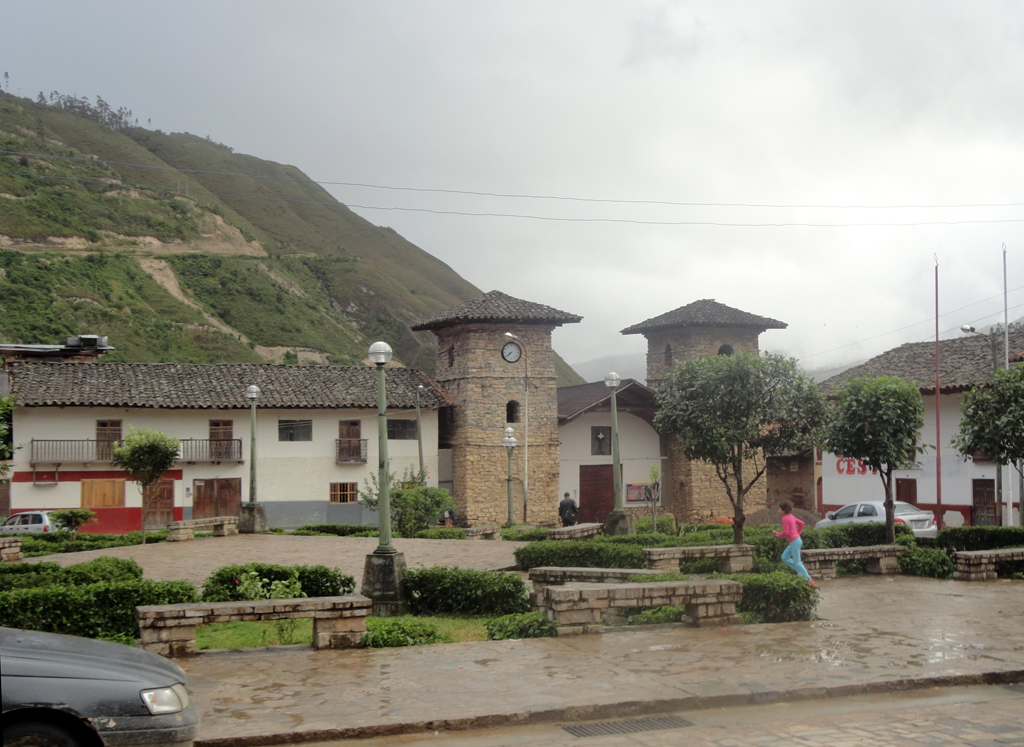
One last breakfast and I was off in a 3 hour minivan ride to Leymebamba. There were two reasons I wanted to stay in Leymebamba. First there was the local museum, opened after the burial site of Languna de los Condores was discovered in 1996. And second, the bus to Cajamarca left Chachapoyas at 6am, stopping in Leymebamba at 9am, so I preferred a 9am bus over a 6am one.
The small village of Leymebamba sits nestled in the green surroundings of the Andean mountains, and as the sun sets the locals stand around in the Plaza de Armas chatting while kids run around playing or riding bikes. It’s a quaint and
completely charming village.
After getting a taxi ride up to the museum, I think I surprised the owner with this
gringo approaching the gate in the wet season with no one else in sight. I was the only person in the museum, except for one maintenance man that was installing a new display case (which he quickly showed me the contents of, a Chachapoyas textile of amazing colour and detail), and the staff working in the mummy room.
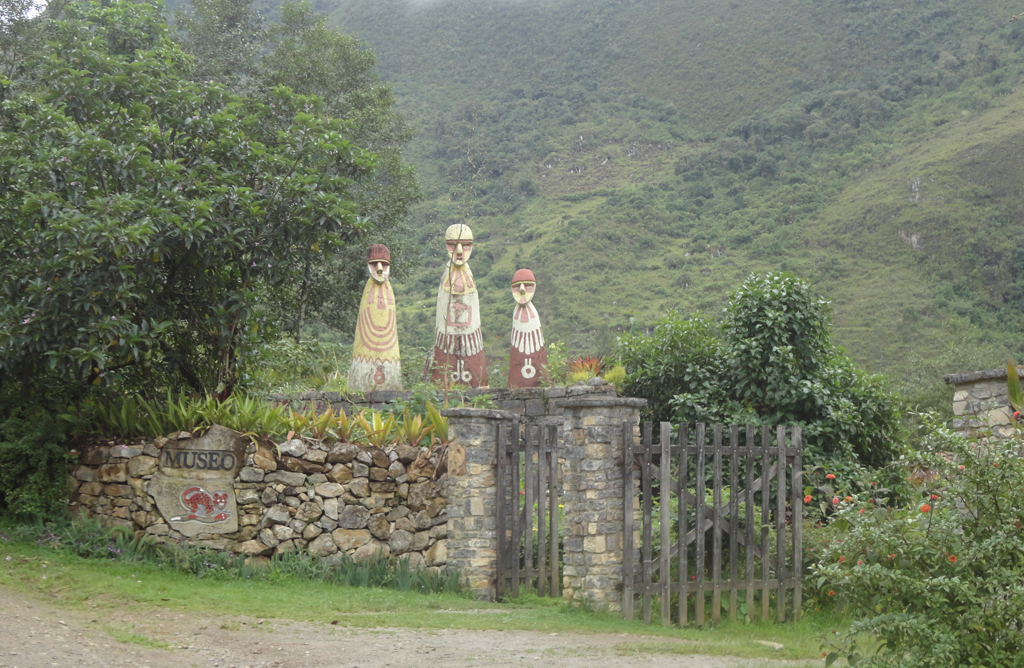
Yep, there was a mummy room with a glass window so that you could observe the staff work. The archaeological site had 6 funerary towers containing 216 mummies. Some were in the sarcophagi, while the majority were wrapped in cotton that had simple faces embroidered on the cloth covering the head. There must have been at least 2 dozen or so mummies on the shelves being studied. Some were still in the burial cloth, but others have been unwrapped to display their ancient visage to look back at you from the grave.
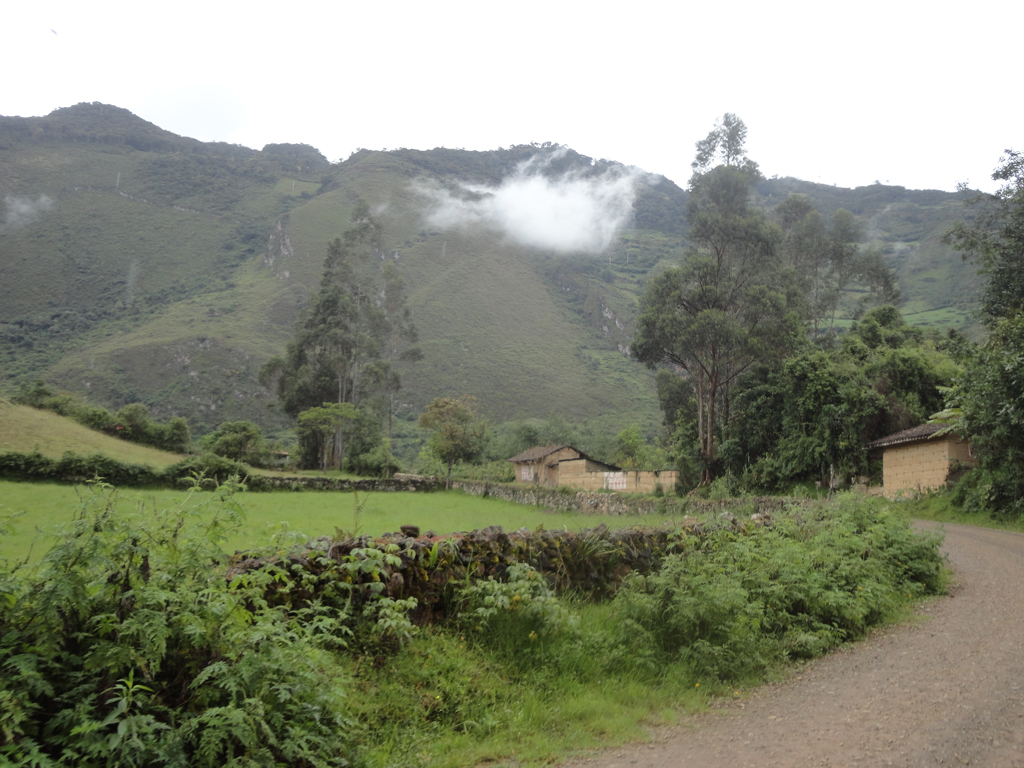
After the museum I had hoped to have lunch at the café across the road that is run by one of the Austrian archaeologist and apparently has a cool garden filled with humming birds. But it was the wet season and the café gate was locked, so as I started walked back to town the dog from the museum decided to follow and give me a guided tour down the road.
That’s one thing that is very different from Ecuador, all the dogs in Peru are healthy, friendly and happy. Rather than try and bite my legs out from me like an Ecuadorian dog would, the museum dog would stop at every curb in the road and look back to make sure I was still behind him. He even ran up a side track at
one point and beckoned me to follow, which lead to a little lookout of amazing views of the valley. Sadly we departed, or should I say he departed me, at a
small village outside Leymebamba and I never got a chance to take his photo.
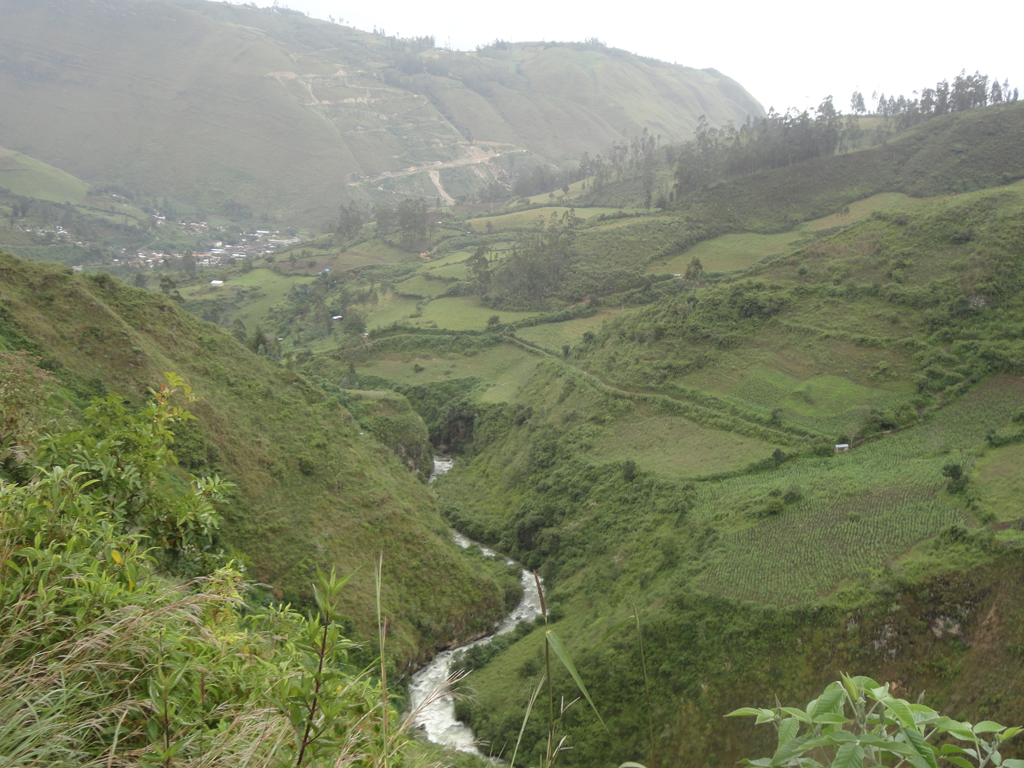
The next morning I sat and waited for the bus. Once again I misguided myself into thinking the buses in Peru run on time. The ticket said 8am, the guy at the bus agency said 8am, but it wasn’t until 9am that it arrived like I thought it
would. Of course the driver got out, locked the bus, and wondered off somewhere. He finally came back at 9:30am, and after everyone was aboard off we went.
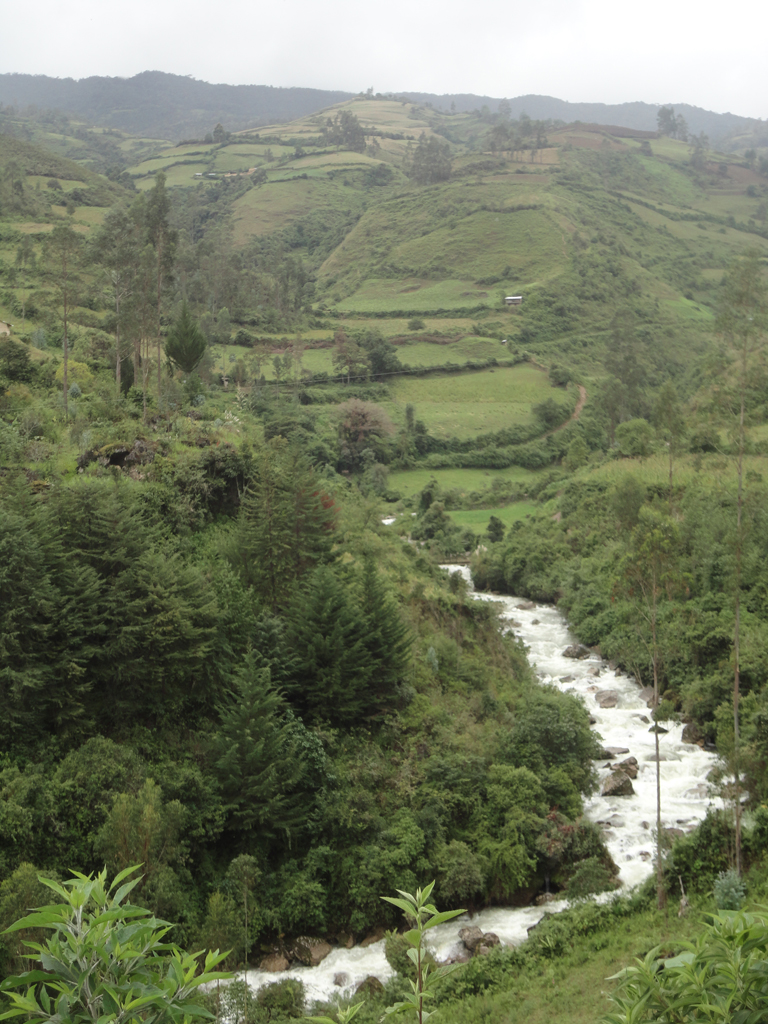
The road to Cajamarca is impressive. The bus went from mountain to mountain, the roads cut across the rock zig zagging with barely enough room for the bus let alone when a passing truck came by. The views from this height are incredible, there are moments were you are literally looking down at the clouds below with mountain peaks breaking through the sea of white.
What I found the most impressive was that the Peruvian farmers don’t see mountain slopes as an obstacle. All along the lush green mountain sides were farm plots, some reaching up at what you’d think impossible heights and angles. It makes for stunning viewing.
Finally after 13 hours on bumpy dirt road we hit asphalt and entered Cajamarca. I
headed for the Plaza de Armas to check out some hostals, and so did the other half a dozen gringos. Finding a place on the plaza, whose rooms desperately
need a lick of paint, I settled in and prepare to find out what Cajamarca has to hold tomorrow.
